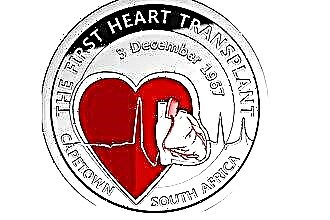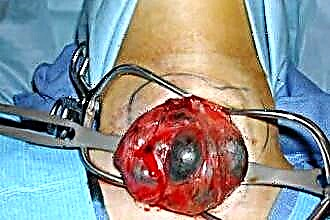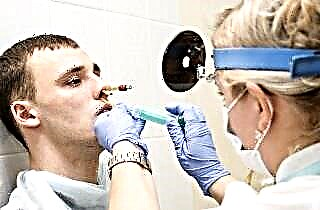About the disease
 A runny nose is included in the Guinness Book of Records as the most common disease on the planet. Hundreds of thousands of patients daily complain of nasal congestion and pathological discharge; unpleasant symptoms are familiar to both children and adults. At the same time, there are several types of the inflammatory process - in particular, allergic rhinitis, chronic inflammation of the nasal mucosa of allergic etiology.
A runny nose is included in the Guinness Book of Records as the most common disease on the planet. Hundreds of thousands of patients daily complain of nasal congestion and pathological discharge; unpleasant symptoms are familiar to both children and adults. At the same time, there are several types of the inflammatory process - in particular, allergic rhinitis, chronic inflammation of the nasal mucosa of allergic etiology.
Allergic rhinitis is a subtype of vasomotor rhinitis, a disease the occurrence of which is associated with pathological vascular reactions from the nasal mucosa. However, at present, these terms are differentiated, since the modern definition of "vasomotor rhinitis" implies the absence of an allergic reaction in the mechanism of development of pathology. The wording "vasomotor" next to the term "allergic rhinitis" is not considered erroneous, but requires clarification when specifying the final diagnosis.
Rhinitis of allergic etiology is divided as seasonal and year-round, which reflects, first of all, the connection with causally significant allergens - in the first case, it is the pollen of plants blooming at a certain time, in the second - household dust, substances with which the patient comes into contact at the workplace, at home, when traveling, traveling. The following classification of rhinitis is also used:
- intermittent (symptoms appear less than 4 days a week and less than 4 weeks during the year);
- persistent (signs of the disease bother the patient for more than 4 days during a week and for more than 4 weeks a year).
The symptoms of allergic rhinitis are reversible - they can be eliminated by stopping contact with the allergen or with the help of selected drug therapy.
Clinical signs
The development of allergic inflammation necessarily includes several stages. During the immunological and pathochemical stage, antibodies to the allergen substance that has entered the body appear, sensitization is formed (hypersensitivity to the allergen), and allergy mediators (biologically active substances) are formed. However, symptoms appear only at the final stage of the reaction - they accompany the pathophysiological stage, also called the stage of clinical manifestations. Therefore, a person notices symptoms not with the initial, but with repeated contact with the allergen.
What complaints can a patient present with allergic vasomotor rhinitis? They can be divided into three main groups.
Typical or specific manifestations
These include:
- Nasal congestion up to forced mouth breathing.
- Allocation of a transparent, serous-mucous secretion of a watery consistency in abundant quantities (rhinorrhea).
- Voice change (nasal appearance), hyposmia (decreased olfactory sensitivity), snoring during sleep.
- Paroxysmal, paroxysmal sneezing, often occurring in the morning.
- Feeling of irritation, itching and burning in the nasal cavity.
You should know that rhinorrhea is mainly characteristic of seasonal exacerbation of an allergic rhinitis. Unlike infectious rhinitis, the discharge does not acquire a thicker consistency and mucopurulent character after a few days from the onset of the disease, they remain watery and abundant throughout the entire period of contact with the allergen. With a year-round form, the dominant symptoms are congestion in combination with a moderate amount of mucous secretion and hyposmia; sneezing and pronounced itching are often absent.
Additional manifestations
Among them are:
- irritation of the skin above the upper lip and at the wings of the nose, accompanied by redness, swelling and itching - appears due to the constant secretion of mucus, friction of the nose;
- itching of the oropharynx, including the palate, tingling and soreness in the throat, coughing - are explained by allergic inflammation of the pharynx (pharyngitis), drainage of secretions from the nasal cavity along the back of the pharynx;
- crackling in the ears, clearly noticeable when swallowing, hearing loss is a symptom of an allergic form of tubo-otitis, inflammation of the auditory tube and middle ear.
Sometimes patients are also concerned about lacrimation and itching of the eyelids as manifestations of allergic conjunctivitis.
The classic symptom of allergic rhinitis is "allergic salute" - frequent scratching of the tip of the nose with the palm of the hand from the bottom up.
Common Symptoms
Their presence characterizes the degree of violation of the general condition:
 weakness, irritability, headache;
weakness, irritability, headache;- sleep disturbance due to difficulty in nasal breathing;
- fever reaching subfebrile values.
Symptoms of allergic rhinitis can be mild - in this case, they do not significantly affect the patient's daily activity, performance and sleep. With a course of moderate severity, noticeable discomfort occurs, expressed in sleep disturbance, the ability to concentrate and perform necessary tasks. A severe course significantly reduces the patient's quality of life, the manifestations of the disease are extremely painful.
Stages, course options and objective signs
Vasomotor rhinitis of allergic etiology includes two stages of clinical manifestations:
- Early.
It develops within 30 minutes from the moment of contact of the nasal mucosa with a causal allergen, lasts from 6 to 12 hours, sometimes up to a day. It is characterized by edema, itching, sneezing, mucus hypersecretion.
- Late.
Changes the stage of early symptoms, the leading manifestation is a persistent violation of nasal breathing due to edema, nasal congestion.
There is also a classification of options for the course of allergic rhinitis, belonging to one of which is due to the predominance of certain symptoms:
- exudative (sneezing, watery discharge, itching in the nose, nasal congestion with periodic intensification of the severity, the phenomenon of conjunctivitis);
- obstructive (constant nasal congestion, significant deterioration of nasal breathing, the release of thick secretions against the background of the absence of sneezing, itching of the mucous membrane and the phenomena of conjunctivitis).
With the exudative form, there is a tendency to a worsening of the condition at night and slight relief in the daytime - in contrast to the obstructive form, in which the symptoms remain unchanged throughout the day.
To assess objective changes, two methods can be used: rhinoscopy (using special mirrors), endoscopy (using an optical device - an endoscope). What signs are found when examining the nasal cavity?
- Pallor of the nasal mucosa - sometimes with a waxy hue.
- The presence of edema of the turbinates of varying severity.
- An abundant amount of colorless foamy discharge or, which is less common (with obstructive flow), thick transparent mucus.
The acquisition of a yellowish-green hue by mucus may indicate the addition of a secondary infection. For an isolated course of an allergic rhinitis, a transparent secret is characteristic.
Therapy
How to start treatment for allergic rhinitis? The best option is to determine which substance is the allergen and stop contact with it. However, what if the symptoms are caused by pollen from plants or trees, and sometimes by dozens of different substances? Not all patients can change their place of residence during the flowering period, and there is nothing to say about contact with household dust - it is impossible to eliminate it completely and forever. Therefore, it applies:
- a set of elimination measures (exclusion of contact with already known allergens, adherence to a hypoallergenic diet, regular wet cleaning in the absence of a patient in the room, rejection of fleecy carpets, soft toys and other items that can accumulate dust);
- drug therapy;
- allergen specific immunotherapy (ASIT).
Treatment of allergic rhinitis is carried out with antihistamines (Cetirizine, Desloratadine), glucocorticosteroids (Nasonex), cromones (Cromohexal), leukotriene antagonists (Montelukast). They are able to fight all manifestations of an allergic reaction - sneezing, itching, nasal congestion; glucocorticosteroids eliminate inflammation, reduce the sensitivity of the mucous membrane to allergens.
Timely and correct treatment of allergic rhinitis reduces the risk of bronchial asthma.
Allergic diseases of the respiratory system have typical symptoms and constitute a large group of respiratory allergies that can develop sequentially - this phenomenon is called "allergic march". Rhinitis of an allergic nature is considered as a likely precursor to the development of bronchial asthma. Therefore, it is important to treat the disease on time, and not only eliminate the symptoms, follow all the recommendations of the attending physician, and undergo a full course of therapy.
The doctor may prescribe tablets for regular use, as well as topical, that is, local forms of medicinal substances - for example, nasal drops (Azelastin, Cromoglikat). All of the previously listed groups of drugs are presented in the form of drops - this allows you to achieve the maximum effect in the contact area (nasal mucosa). The choice of medication depends on the severity of the course - with a mild form, preference is given to local effects; when the condition worsens, glucocorticosteroids are used in topical and systemic (injections) form.
 To facilitate nasal breathing, many patients use vasoconstrictor drops and sprays (Vibrocil, Xylometazoline), which can relieve painful congestion. Although the nose begins to breathe after the injection, this is not a solution to the problem of allergic rhinitis in general. Such drops help to quickly eliminate swelling and reduce mucus production, but they cannot stop an allergic reaction or eliminate inflammation. Treatment with their help lasts no longer than 7-10 days, since addiction occurs (the phenomenon of tachyphylaxis), the risk of developing drug-induced rhinitis.
To facilitate nasal breathing, many patients use vasoconstrictor drops and sprays (Vibrocil, Xylometazoline), which can relieve painful congestion. Although the nose begins to breathe after the injection, this is not a solution to the problem of allergic rhinitis in general. Such drops help to quickly eliminate swelling and reduce mucus production, but they cannot stop an allergic reaction or eliminate inflammation. Treatment with their help lasts no longer than 7-10 days, since addiction occurs (the phenomenon of tachyphylaxis), the risk of developing drug-induced rhinitis.
There is not only symptomatic, but also pathogenetic treatment of rhinitis of an allergic nature - allergen-specific immunotherapy, which implies the introduction of an allergen into the body in small doses in order to reduce sensitivity to it. It is prescribed and carried out by an allergist without exacerbation of an allergic rhinitis.

 weakness, irritability, headache;
weakness, irritability, headache;

